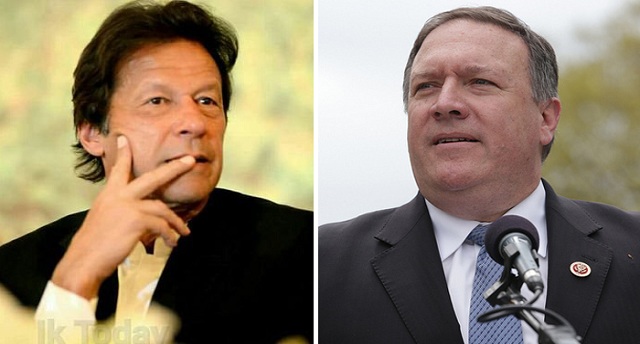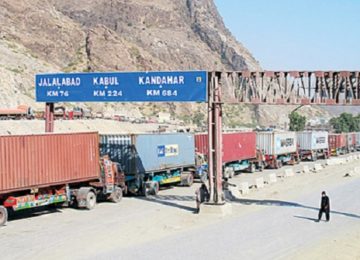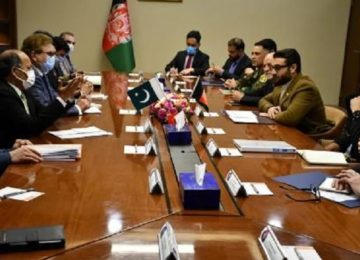“We have worked closely with the Pakistanis in my role as C.I.A. director; our teams have been working together for a long time,” Mr. Pompeo said on his flight to Islamabad. He was further quoted saying that there were lots of challenges between the two countries, however, Washington was hopeful that with new leadership in Islamabad, the Trump administration can find common ground and begin to work on some of the shared problems together.
Indeed, the visit had a lot to do with getting a feel of PM Khan’s incoming government. This was but to be expected in light of Imran Khan’s anti-West statements before he became the country’s prime minister. His statement of shooting down American drones, if an attack was made on Pakistan should he become premier, is remembered in Washington’s power corridors.
These fears of PM Khan, acting like Trump, might hold little substance. Making statements while in opposition and sitting in the driving seat are two different things; offering different views of the same situation.
Pompeo’s task was a daunting one in light of the US cutting off military aid worth $300 million to Pakistan shortly before the visit. USA and Pakistan’s relationship has been facing a downward trajectory of unprecedented proportions for some time now, and the visit was welcomed by Pakistan as a positive step. The five hour visit by Pompeo with US Joint Chief of Staff General Joseph Dunford, however, was too short to engage in any substantive dialogue and decide the future course of action.
The meeting did, however, ‘break the ice’ between the US and the new government, and was hailed in Pakistan as being a healthy one sharing problems faced by both. Washington views Pakistan as an ally to China. The US objective of achieving a negotiated political settlement in Afghanistan at one tangent has merged with applying pressure to check China’s influence in the region under her flagship BRI project of which CPEC is an intrinsic part.
The relationship between Islamabad and Washington is riddled with allegations from both sides of double crossing and not being on the same page when it comes to Afghanistan. Following a five hour stopover in Pakistan was a one day visit to India to negotiate and finalize major deals which, if achieved, would make India a defence partner of the US. This has created a backlash in Pakistan. Sitting Senator General (R) Abdul Qayyum says, “Prior to US Secretary of State’s visit to Pakistan, Americans cancelled $300m reimbursement, withdrew International military training facility and gave a very negative uncalled for statement on IMF issue. Besides, they are creating FATF pressure. These unfriendly gestures immediately spoke volumes about their mindset and thus destroyed all hopes for any meaningful breakthrough. Americans have a two pronged strategy. At the regional level; to hide own failures in Afghanistan, blame Pakistan and at the strategic level; project India to effectively contain China and pressurize. We must internally implement NAP, work for economic revival and externally continue to engage regional and global friends and foes to remove misgivings and to counter hostile propaganda premeditated to globally isolate Pakistan.”
The US is also concerned about the supply line for NATO to Afghanistan from Pakistan, and whether the government will create hurdles in this. In 2013, PTI had set up checkpoints of its own in Peshawar to stop the NATO supply vehicles getting into Afghanistan. Sit-ins were also organized to protest against the drone attacks in Pakistan. Though routes will not be closed, there may be a strong possibility of renegotiating the tariffs for the NATO supply vehicles entering Afghanistan. PM Khan has previously stated that the Pak-US relationship must be on a balanced footing.
USA’s desire to involve Pakistan in bringing the Taliban to the table for a politically negotiated settlement overlooks a crucial point. USA thinks Pakistan has the same clout with Taliban that it had during the era of creation of Mujahedeen under General Zia ul Haq with the CIA funding. The US must critically evaluate if Pakistani military’s influence is evenly spread over different shades of groups within Taliban and its affiliates to bring about the desired outcome. The influence is just not enough to bring a change in their combined objective.
The outfit has shown no sign of flagging over the last 17 years of war and therefore it is now dealing from a position of strength. It is not feasible to think that if asked by Pakistan’s powerful military, they will easily submit. However, if pressure has to be exerted on the Afghan Taliban, Pakistan’s military would be in a position to help as the Afghan Taliban has never attacked Pakistan. They have neither undertaken any steps to undermine Pakistan’s regional interests. Which is why, they may be more open to talk to Pakistan.
A very positive statement that came out of after the meetings in Islamabad was by General Dunford, who stated, “We don’t have any reason to indicate that our cooperation in keeping the GLOCs open is going to change.” (The U.S Department of State: Remarks with Chairman of the Joint Chiefs of Staff General Joseph Dunford). The US concerns arise from dealing with the ‘unknown’ that is the Khan government. Nawaz Sharif’s PML-N and Bhutto’s PPP, on the other hand, were known quantities. The days of walking over Pakistan may well be behind, however, no action that causes a rupture in an already frayed relationship is expected under PM Khan’s watch.
However, even with misgivings and tensions, both Pakistan and the US understand that their partnership is important for a peaceful Afghanistan. Hence, both the countries need find mutual ground for an effective ‘reset’.
The writer Yasmeen Aftab Ali is a lawyer, academic and political analyst. She has authored a book titled ‘A Comparative Analysis of Media & Media Laws in Pakistan.’ She can be contacted at: yasmeenali62@gmail.com and tweets at @yasmeen_9








